Amid ongoing industry discussions around the definition of premium content and the role of global streaming platforms within the broader “TV” ecosystem, Vevo, the world’s leading music video network, which distributes the largest network of premium music channels on YouTube, has released a new study. The research conducted by Amplified Intelligence offers valuable insights into the effect of heightened attention that premium content demands, no matter the platform of delivery.
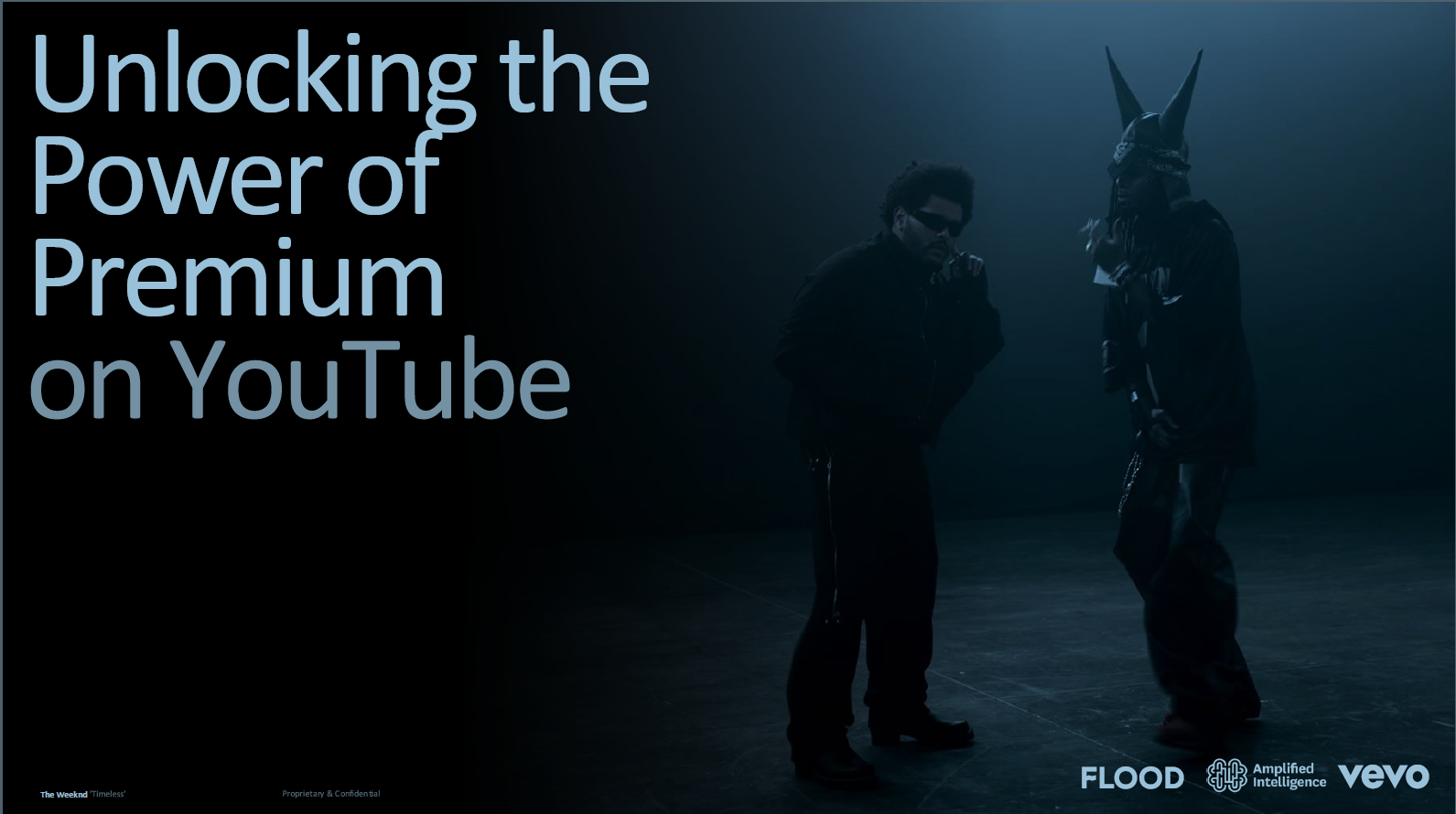
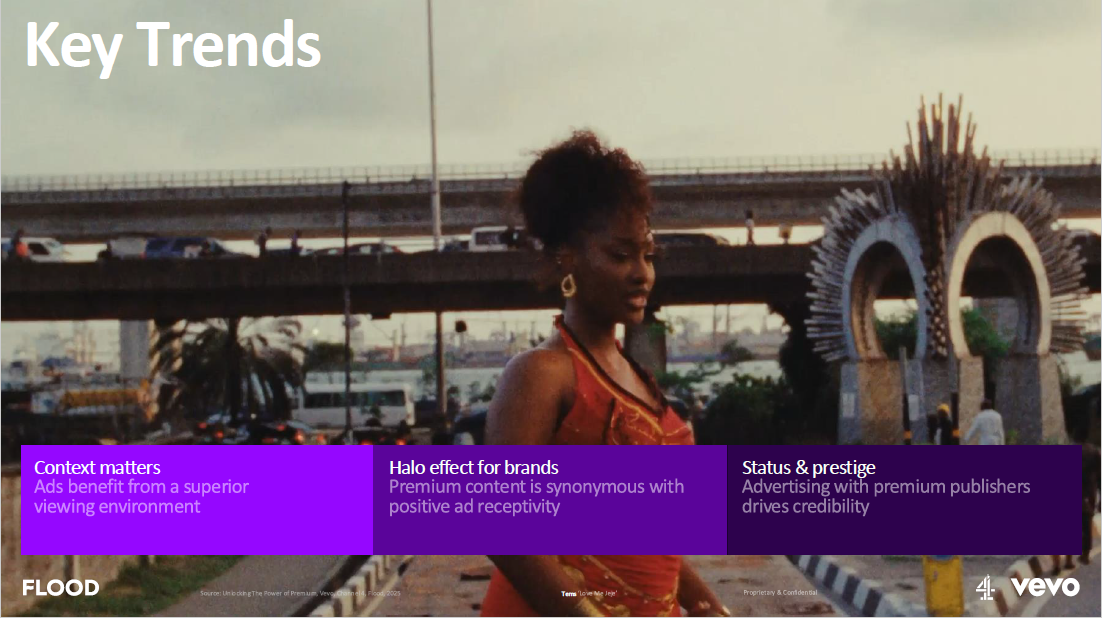
Unlocking Premium on YouTube
In 2023, Vevo began looking at this space, together with Channel 4, when it commissioned Flood & Partners to understand how advertising around premium content on YouTube influences audience brand perception. With digital video consumption continuing to grow, brands need to ensure that their ads are placed in contexts that not only capture attention but also build trust and credibility with consumers.
The study aimed to differentiate premium from non-premium content using BARB’s “Fit for TV” framework, which sets the benchmark for high-quality, TV-ready content.
(These metrics are an industry-wide consensus on the value of content that’s produced to quality standards that include:
· Editorial input and oversight
· Regulatory compliance, or an intention to deliver content that aligns with prevailing regulation
· Content that provides a safe and suitable environment for advertisers)
By analysing audience behaviour, ad reception, and brand impact, this research sought to provide advertisers with actionable insights into how premium content drives trust, and brand lift compared to non-premium content. The findings are critical for brands looking to optimize their media strategies, ensuring their ads appear in environments that foster positive perceptions and sustained engagement.
(More info about the methodology*)
Why Premium Matters
The initial study reinforced that context is crucial in shaping how ads are received. Ads placed in premium environments benefit from a more engaged audience, leading to higher attention rates and more favourable brand perceptions. Premium content is 3.2 times more likely to be viewed on a television screen than non-premium content, ensuring a more immersive experience. This larger screen experience places ads in a setting that consumers associate with high-quality entertainment, enhancing receptivity.
Additionally, ads in premium content are perceived as more credible, trustworthy, and well-placed. In contrast, ads appearing in non-premium content are more likely to be seen in a negative light. The environment in which an ad appears significantly influences consumer trust, making premium content a superior choice for brands seeking to establish credibility.
Advertising within premium content also elevates brand status and prestige. Consumers associate brands appearing in high-quality environments with attributes such as credibility, desirability, and innovation. On the other hand, ads in non-premium content often struggle with negative perceptions, where brands are more likely to be seen as low-quality or irritating. The study highlights that premium environments amplify brand perception, positioning them as established, high-status, and reputable.
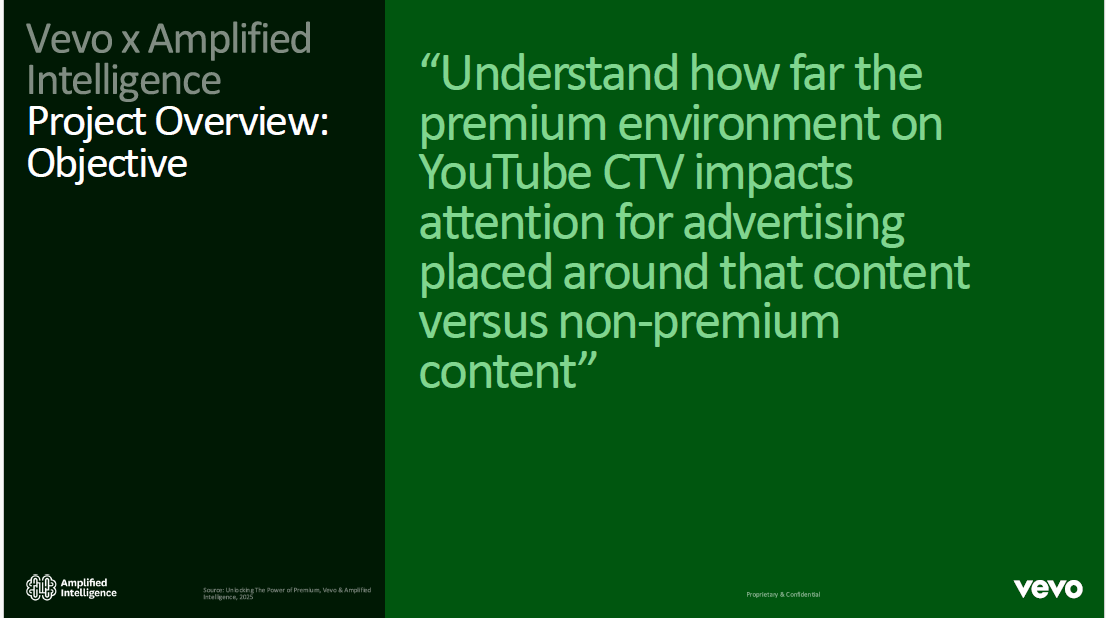

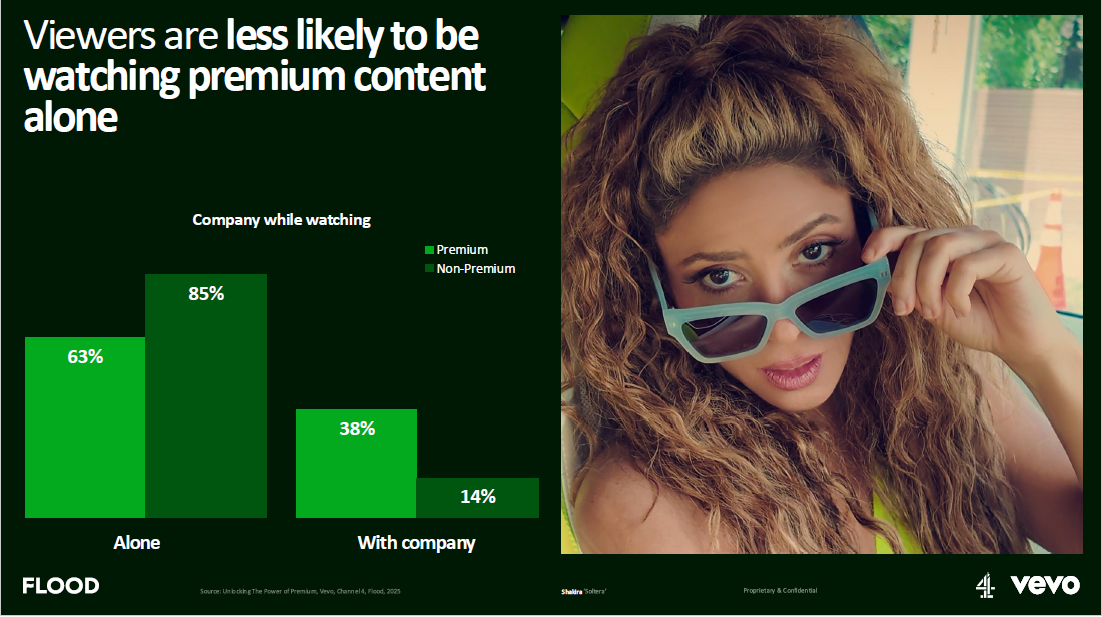
How Premium Content Captures More Attention
With these findings and evidence of heightened attention, Vevo subsequently partnered with Amplified Intelligence on a new attention-focused study. The research revealed that premium content across numerous publishers drives 40% more active attention, meaning consumers engage more with ads in premium environments. Furthermore, 84% of ads in premium content are either actively or passively viewed, resulting in significantly less ad wastage. Compared to the UK benchmark of 14 seconds of active attention, premium channels deliver 17 seconds on average, ensuring longer and more meaningful engagement.
A key finding was the effectiveness of different ad formats. Non-skippable ads emerged as the most effective, with 94% of the ad being viewed in some form of attention—either active or passive. By contrast, skippable ads see a significant drop-off, as users tend to skip after five seconds. Longer ads are only effective in slow-decay formats, where engagement remains stable throughout the ad’s duration. This insight is crucial for advertisers looking to optimize their ad placements for maximum impact.
The study found that premium content not only drives higher engagement but also encourages co-viewing experiences, further enhancing brand exposure. Vevo’s content demonstrated 38% more active attention among 18-34-year-olds. This is particularly significant given that younger demographics are typically harder to engage.
Additionally, 71% of households watch premium content with at least two people, meaning ads in premium environments reach multiple viewers at once. This group-viewing behaviour amplifies brand messaging, making premium content an ideal space for advertisers looking to maximize reach and impact. In contrast, non-premium content is more likely to be watched alone, limiting its influence.
(More info about the methodology*)
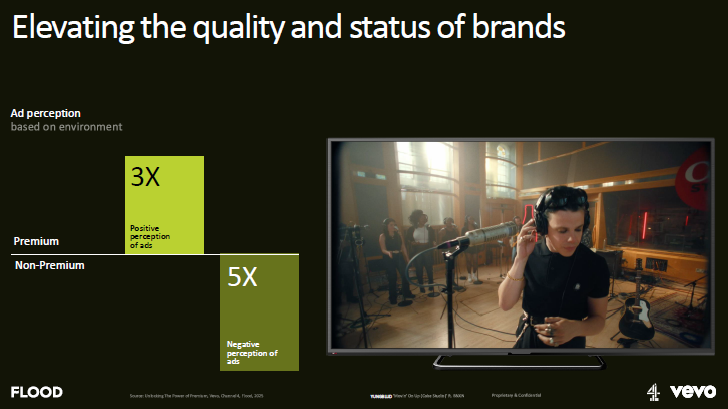
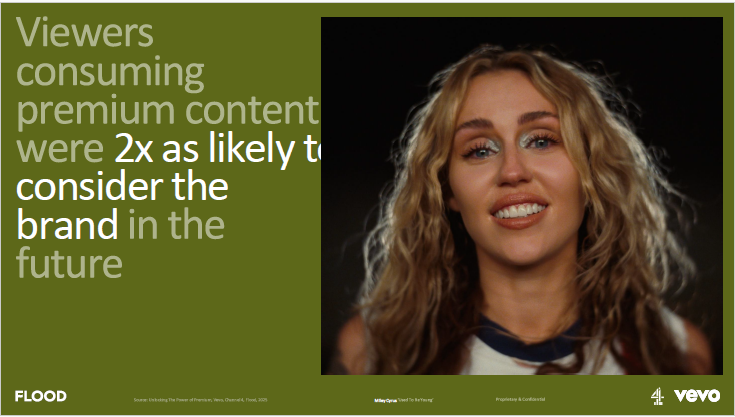
The Halo Effect on Brands
Advertising within premium environments does more than just capture attention—it actively strengthens brand perception. The research with Flood & Partners also made clear that ads placed in premium content are three times more positively received compared to non-premium placements. Consumers exposed to premium ads were also twice as likely to consider the brand in the future, highlighting the long-term value of premium ad placements.
Premium content also elevates wider brand associations, reinforcing attributes such as high quality, innovation, and credibility. Viewers described brands in premium environments as reputable, successful, and trendsetting, while brands in non-premium settings were more frequently associated with being irritating, low-quality, or irrelevant. These findings confirm that the environment in which an ad appears directly impacts how a brand is perceived, making premium placements a strategic choice for brand-building.
Conclusion: The Power of Premium for Advertisers
These studies highlight that premium content delivers superior ad effectiveness, with higher engagement, stronger brand associations, and greater credibility. Advertising in premium environments ensures that more ads are viewed in full, with minimal wastage, maximizing return on investment.
For advertisers, the implications are clear: content should be the foremost decision in branding, with platform of delivery being less important in this new world of fragmentation. Premium content is a powerful driver of attention, trust, and brand success. By prioritizing placements within high-quality, well-curated content, brands can unlock greater consumer engagement, improve perception, and drive stronger business outcomes. In an era where attention is scarce, premium content stands out as the key to impactful advertising.
Get the full study here
*Methodology:
- To achieve a well-rounded understanding of premium content’s impact, Flood Partners incorporated both quantitative and qualitative methodologies. Quantitatively a large-scale survey was conducted with 1,000 UK consumers aged 16-40, all of whom regularly watch video content. A follow-up survey was conducted with 400 respondents to examine long-term advertising effects. Qualitatively, deep-dive interviews, five-day diaries, and vlogs with 16 participants provided insights into real-life viewing experiences and attitudes toward premium vs. non-premium content.
- Captured through opt-in logs and facial tracking TV devices, Amplified Intelligence measured 150 households, with 19,000 ad views for over 240 brands collected across 5,000+ YouTube channels. Attention measurement tools, including eye-tracking and active engagement assessments, helped quantify how viewers interacted with ads in premium and non-premium environments. This robust methodological approach allowed the study to present comprehensive insights into audience behaviour, attention retention, and brand perception.

